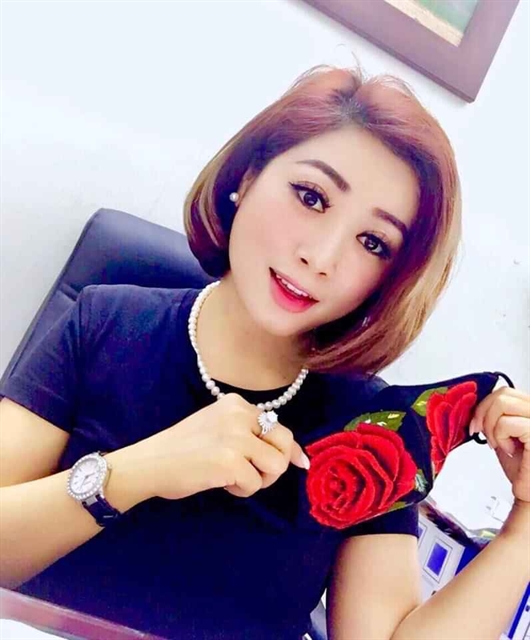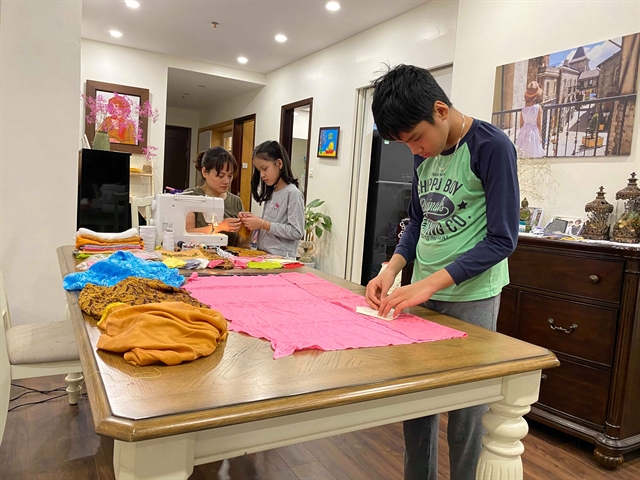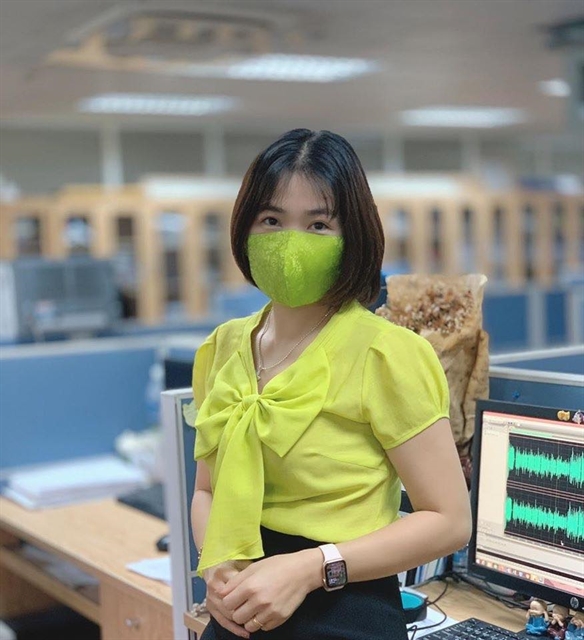Lê Hương
Wearing a mask is now no longer an option, it's a must when outdoors due to the COVID-19 pandemic and with a new must-have accessory, comes new fashion.
Some designers in Việt Nam have stepped in to fill the demand for masks which cover the face but are still stylish.
Embroidered masks
Đỗ Quyên Hoa, a fashion designer in Hà Nội's Đống Đa District, has made luxurious masks decorated with embroidered patterns.

A model with Hoa's mask. — Photo courtesy of Đỗ Quyên Hoa
She often uses black cotton for her masks, which she then embroiders with flower, insect and animal patterns. In the middle of the cotton layers is a sheet of activated carbon.
“I think our faces, especially women’s faces, are like flowers,” she told Việt Nam News. “We cannot use masks that look like diapers or dumb textiles. Why do we dress well, wear high-end glasses and don’t wear beautiful masks?”

A heavily embroidered mask designed by Đỗ Quyên Hoa. — Photo courtesy of the designer
“We should change our thoughts about masks, which should not only use to prevent dust, sunlight and viruses but also decorate us,” she said.
Hoa said she plans to try other materials like silk, linen, taffeta and velvet.
Her hand-embroidered masks are a first for the capital and therefore cost considerably more than average masks at VNĐ500,000-600,000 (US$21-25.4) each depending on the patterns.
Hoa said it’s not simple to embroider on a surface as small as a mask, meaning a mask takes three days to be finished, which she said explains the high price.
“I have to think of patterns that are both attractive and unique,” she said.
“Now I just use the masks as a promotion for my frequent customers,” she said. “I’ll design some for men as well with manly embroidered patterns.”
Hoa said she already had an order to maks up an entire family from HCM City.
“I think like the clothes I design, my luxurious masks will have their own customers.”
Silk masks
Nguyễn Mỹ Trà, a journalist from the Radio Voice of Vietnam, has made her own masks using silk made by artisans from Phùng Xá Village in Mỹ Đức District in the western outskirts of Hà Nội.

Trà (left) and her daughter at home. — Photos courtesy of Nguyễn Mỹ Trà
“I love silk and know that silk has a natural anti-septic feature,” she said. “When I made my first silk masks, I gave some to my friends as gifts, who encouraged me to produce more to sell.”
Trà said she uses traditional decorative patterns weaved on silk as highlights for the face. She has changed her design several times to make the product more comfortable to wear and ensure hygiene feature by using a layer of silver nanosheet between the outer silk layers.

It takes around an hour to make a silk mask.
“Some of my friends bought my masks to give to foreigners as gifts and they liked them a lot,” she said. “Though foreigners do not like wearing masks, they like my silk masks.”
Trà said both her children and one cousin have joined her "production line" at home.
"My children are quite free during this isolation period," she said. "So it's a game for them as well."

Trà and her children in her home "production line".
She said she can also add a layer of activated carbon sheet in the middle of silk layers to improve the masks' anti-septic qualities.
Trà said she washes the silk then dries it to let the silk shrink, then soaks it with water again before cutting and sewing. It takes around an hour to complete a silk mask.
Now she has changed to silk material from Nha Xá Silk Village in Hà Nam Province in the south of Hà Nội for her masks.
“My masks now not only have traditional value but also meet criteria on virus prevention,” she said.
Her masks cost VNĐ100,000 each.

A colleague from the VOV poses for a photo with a mask made by Trà.
"Everyone has masks," she said. "But we still need something to cheer ourselves up during these doom days". — VNS